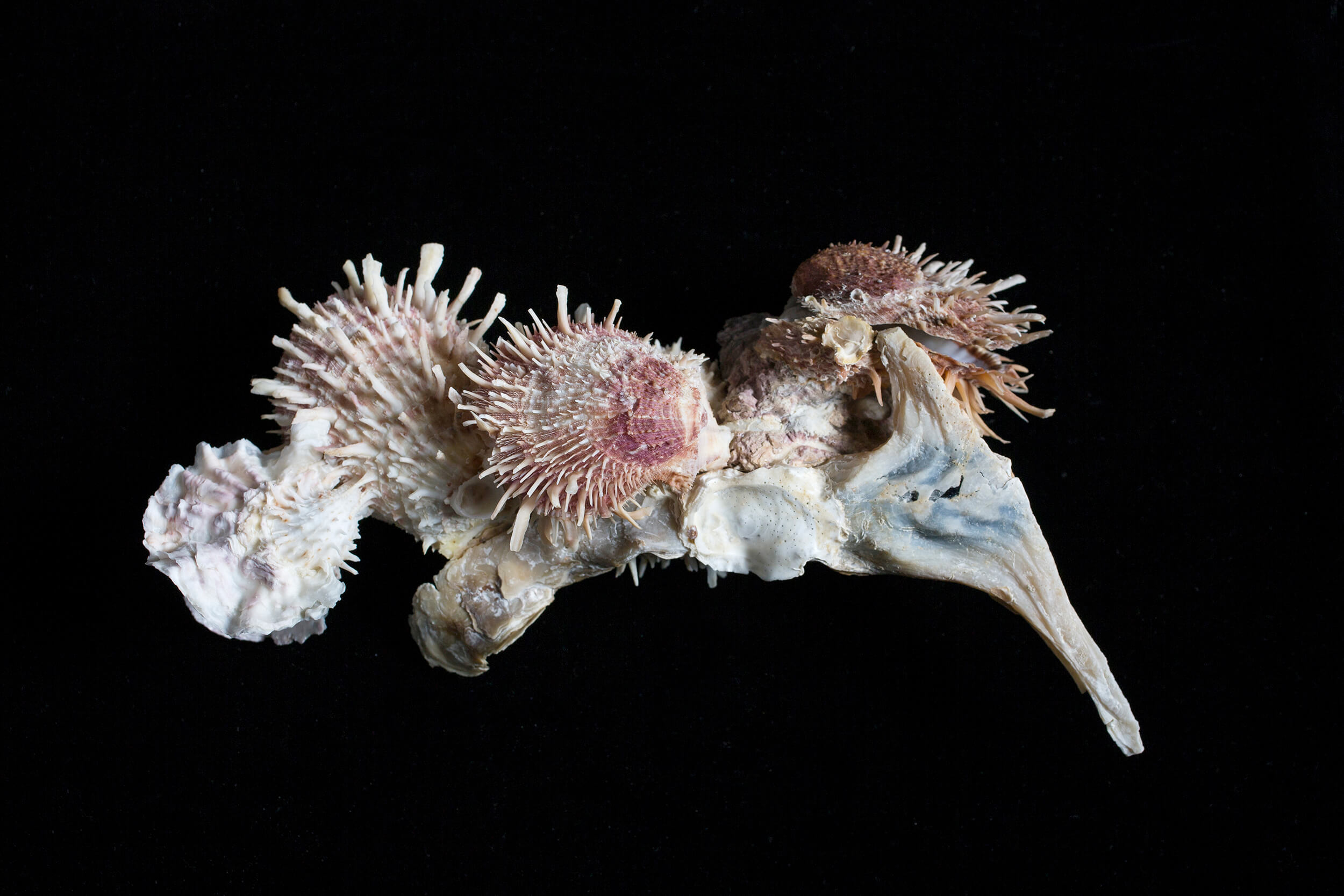Sea Shells
SHELLS: THE ONLY TRUE ALIENS
YEAR 2017 and ongoing
TRAVELS TO California / USA, Galapagos/Ecuador, Hawaii / USA, Japan, Madagascar, Mauritius, México, New Zealand, Norway, Puerto Rico / USA, Singapore, South Africa, Namibia/ Ivory Coast/Senegal, Swedish West Coast, Thailand
MEDIA OUTLETS: Book
In her unfinished collection of thoughts, aphorisms and paradoxes, The Normal Chaos of Things,* Regina Derieva wrote tartly, “It is worth looking for intelligent life on other planets even though, on Earth, it can only be discovered with difficulty”. Another sphere of fascination was the world of underwater creatures. She saw these inhabitants of the seas and oceans as the curious and even frightening creators of a new aesthetics and beauty.
Now we present the project which has grown from the poet’s fascination, a project that was left unfinished but which has been completed by her widower. This book on seashells had its beginnings as far back as the very first shell which Regina Derieva (1949-2013) received in childhood as a present.
Born in the city of Odessa on the Black Sea, the young Regina had only a vague idea of what the sea was. Being a rickety child of a mother who lacked milk, the infant was suckled by a neighbour, an accidental nurse. Owing to the poverty of her family, Regina had no ordinary crib and spent the earliest years of her life mainly in a zinc wash-tub. Well-wishers assured the mother that the child would not live long, and if she wished to extend the child’s life, in no way should that feeble small body be exposed to the gusts of the chilly sea wind. Not until she was three was Regina introduced to the ‘Salty Miracle’ of the Black Sea. Immediately, and with indescribable excitement, she began to examine and sort out everything to be found on the shore and in the surf, where there was an abundance of mussels and other bivalves (though only a few Gastropoda mollusks).**
At about the same time, Regina received a gift which became the first item of her collection – a small Cypraea (cowrie shell) from the South Pacific. It came from the father of her foster-brother who, returning from various voyages, regularly surprised his neighbors in the communal apartment-buildingwith new wonders. He worked on the famous whaling ship, the "Glory", and thus, unlike many citizens of his travel-restrictive country, he was able to visit distant Japanese and Philippine ports.
Sea themes and, of course, sea inhabitants, appear in Regina’s poems and prose from the age of fifteen to the works of her final years. Friends and admirers of her talent, knowing of this passion, regularly sent her new samples from all parts of the Old and New Worlds. Not surprisingly, these were mainly the so-called "tourist" shells, purchased in souvenir shops or found on the shores of famous resorts. But they were dear to Regina, stirred her imagination and accompanied her during all her travels from the Ukraine to Kazakhstan and other corners of the Soviet Union, from there to Palestine, and then, finally in 1999, the move to Sweden.
After some years, however, Regina reconsidered her attitude toward collecting. This occurred in connection with her first visit to Singapore in 2007, where she had been invited to participate in the Writers’ Festival. During a week spent at the Costa Sands Downtown East resort she was lucky enough to find some wonderful shells in the surf. As a consequence she acquired new acquaintances in the scientific world. Participating in the largest shell auctions, she managed in only six years or so to assemble a wonderful collection of about 4000 species. It comprises common, uncommon and very rare Gastropoda (mostly), Eogastropoda, Cephalopoda and Bivalvia, from oceans and seas stretching from the Arctic to the Antarctic.
After Regina Derieva’s death, parts of her collection were transferred to several university and museum holdings, along with other archival materials. The fully completed Personidae collection (with associated families and fossils) has found its place in the Swedish Museum of Natural History.
The present book, given its aesthetic approach to the appreciation of seashells, makes no claim to being a true scientific work, though it does include an historical excursus in Conchology and seashell collecting.
The volume contains the following chapters:
SWEDISH SHELLS (concerning the leading role and importance of Swedes and Swedish science in international Malacology and Conchology)
ROYAL SHELLS (on former fashionable and luxury activities of the world's royal households)
RELIGIOUS SHELLS (the first essay on this theme was written by Regina in 1992 while living in East Jerusalem)
TALKING SHELLS (about various types of shells that "talk, write, paint, play music and dance")
A GRIMACE, HAIRY EAR OR DISTORSIO ANUS (about Regina's collection of the Personidae family)
FREAKS OR BEAUTY (about the most outstanding examples of extremely unusual and very rare shells).
This book, with its amazing images made by the great Swedish photographer Donald Boström will appeal to shell collectors, natural history lovers and all who are connoisseurs of books of superb photography. Not only does the volume contain a large number of examples from Regina's collection (with short descriptions of each species), it also presents remarkable photographs of living mollusks that were taken all over the world.
* From an online publication of Regina Derieva's “The Normal Chaos of Things” in The Hopkins Review.
https://muse.jhu.edu/article/626936
** Regina would later be particularly fascinated by one member of the Gastropoda, the Rapana venosa, which had invaded the Black Sea shortly before the time of her birth. This shell immediately became a popular souvenir among Soviet holiday-makers. Almost everyone who visited the Crimean peninsula or the coast of Georgia or, later, that of Odessa (it was not until the late 1960’s that the Rapana venosa (or Rapana pontica) was documented there), would carry this red-necked trophy back with them to all parts of the Soviet Union to decorate dressing-tables or serve as ashtrays. Regina was especially horrified by the ashtray fate of these shells, and wherever she could, she “rescued” them – that is, confiscated them and added them to her collection. As, for example, in the hostel of the Karaganda Music College in 1972, where Regina taught piano and was invited to celebrate a graduation together with her students and two of her colleagues, as can be seen in the recently found archive photo.


